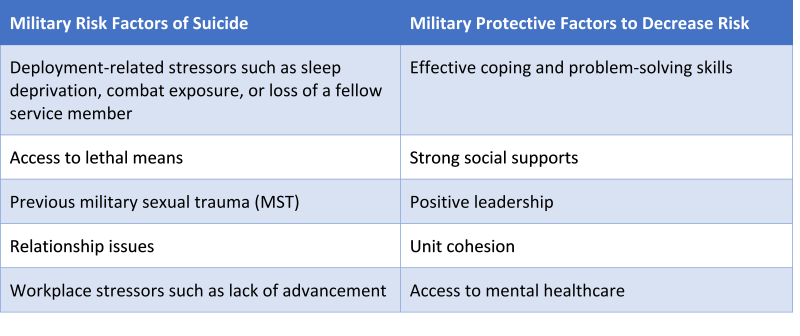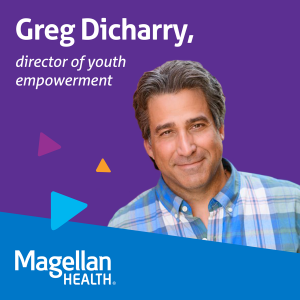Suicide Prevention Awareness Month, observed annually in September, serves as a crucial reminder of the importance of promoting mental health, offering support, and fostering hope to prevent the tragic loss of lives to suicide. Death by suicide among service members, veterans, and their families is becoming a national crisis. This population is at higher risk for common risk factors, including experiencing a mental health condition and having a physical health problem.
On Thursday, September 7th, Magellan Federal hosted a webinar, “Suicide Prevention Strategies and Resources for Military Families” focused on the prevalence of suicide in the military and the resources and strategies that can be used to reduce military suicides.
In this Q&A, webinar panelist Jason Kuttner, Magellan Federal’s supervisor for the Adolescent Support and Counseling Service, shares insight into his work with suicide prevention.
Q: What is your role with ASACS and how were you able to develop the Suicide Risk Assessment protocols?
Jason Kuttner: I have been the ASACS Program clinical supervisor for Hawaii since 2018. I’ve been with the program since 2012, first as a counselor in Japan and Germany, then as a clinical supervisor for Asia from 2015-2018. Prior to working with ASACS, I worked in crisis mental health services in Oregon where I had a variety of roles including conducting involuntary commitment investigations, providing emergent crisis counseling services, and helping train law enforcement professionals as part of the CIT (crisis intervention training) program. In these roles, I have worked with countless individuals in mental health crises. I’ve had extensive training in best practices for working with suicidal individuals and I’ve been able to learn from first-hand experience what works to de-escalate crises including implementing wrap-around support to keep people safe in the short and long term.
Q: When discussing suicide prevention how are the needs of a service member or a veteran differ from a civilian?
Kuttner: Suicide rates among veterans are significantly higher than in the civilian population. Veterans are 1.5 times more likely to die by suicide than non-veterans.[1] Reasons for this include high exposure to trauma, stress and burnout, isolation and loneliness, easy access to and familiarity with firearms, and difficulties integrating into civilian life. Active-duty service member suicide rates have been climbing in recent years and are now on par with the general population. One of the most significant challenges with service members is reducing the culture of stigma to access mental health services. There is a perception that accessing mental healthcare may jeopardize a service member’s career opportunities. All the branches of service are working to try to reduce this stigma and to make it easier for service members to seek help when they need it.
Q: In your webinar presentation you mention the need for more community-based prevention. What does community-based prevention look like and why is it needed?
Kuttner: Community-based prevention means simply helping and encouraging people to find ways to connect with others. The most effective of these are not framed as ‘suicide prevention’ per se but are ways for people to find others with common interests to engage with. This can include hiking, recreational sports leagues, motorcycling groups, service work and volunteering, music and arts, spiritual and religious organizations, and basically any kind of hobbies and interests that people can do with others. In person, social connection is an important antidote to mental distress which is often exacerbated by isolation. Increasingly people are connecting online through social media, multiplayer gaming, and other ways. While this seems like a good idea and can be a way to connect with like-minded people, research has been showing a correlation between increasing use of social media with higher rates of depression, anxiety, and loneliness.
Q: Where can a service member, a veteran, or their family go if they feel depressed or are having thoughts of committing suicide?
Kuttner: There is good help there! The 988 mental health crisis and suicide lifeline was rolled out a little over one year ago. The lifeline connects people to local mental health support services including veteran-specific services. You can call or text and help is prompt, confidential, and professional. It is so important to know that there is no shame in having depressed and even suicidal thoughts; these are very common, and most people will have times in their lives when they experience dark thoughts including morbid ruminations. We need to reinforce the message that none of us are alone. Talking to somebody about these thoughts actually helps. The more people who are trained as peer supports to be able to know how to listen and talk to a person who is depressed and possibly suicidal the better. Many communities have access to free suicide prevention training such as ASIST and SafeTalk which are intended to train regular, non-mental health professionals to know how to be there for family members, friends, colleagues, and others who may be experiencing mental distress.
For service members who are worried about the stigma of accessing mental health support, chaplains are professionally trained to provide help and can help service members navigate their thoughts and feelings and help them determine what the next steps are to keep them safe. Also, the MFLC program- military family life counselors- are licensed mental health counselors contracted to provide non-medical counseling to service members and their families. MFLCs provide experienced guidance to help people resolve issues and access additional support if necessary.
Q: What are some barriers that might prevent a service member or a veteran from seeking help?
Kuttner: The most significant barrier is stigma- being worried that asking for help is a sign of weakness or might jeopardize their career or status in some way. It is so important to recognize that life is so much more than this present moment. Most suicidal crises are centered on the view that the circumstances that have led to this moment are not resolvable without an immediate and permanent way out. Sadly, the consequences of suicide have a ripple effect that can profoundly affect hundreds or more people in a person’s life. The crisis that a person is experiencing in the present moment can be overcome and the first step in doing so is letting it out, talking to somebody, and letting another person in to help bring some light into the darkness.
Who should watch this webinar and what would they gain?
Kuttner: Anyone who is interested in learning more should attend. Suicide has impacted or will impact most people at some point in their lives. All of us have times of difficulty and have people in our lives who suffer mental distress. The more we can do to get the word out that help is available and there are things that all of us can do to help ourselves and others in our lives, the better.
If you missed this important webinar, click here to watch the replay: https://www.magellanfederal.com/whats-new/mfed-inform/suicide-prevention-strategies-and-resources-for-military-families/
[1] National Veteran Suicide Prevention Annual Report, September 2022

